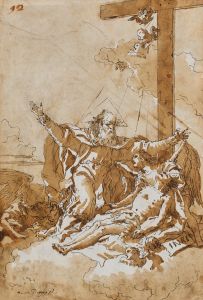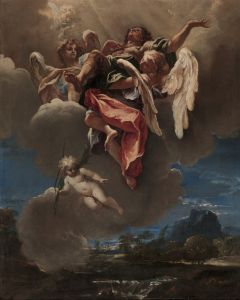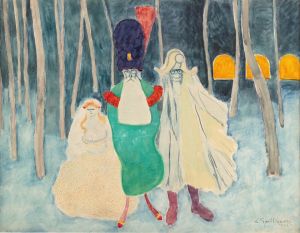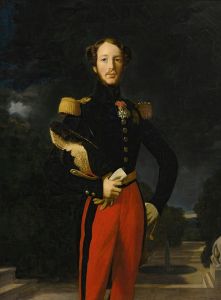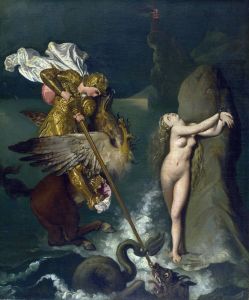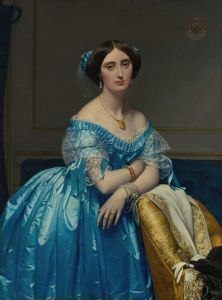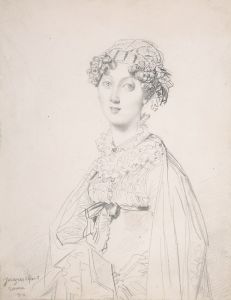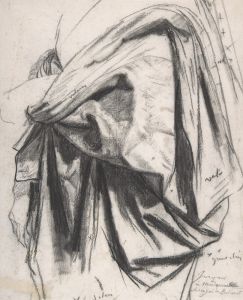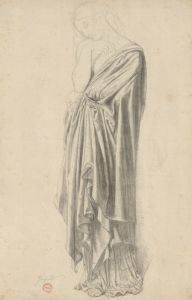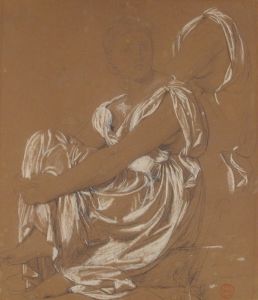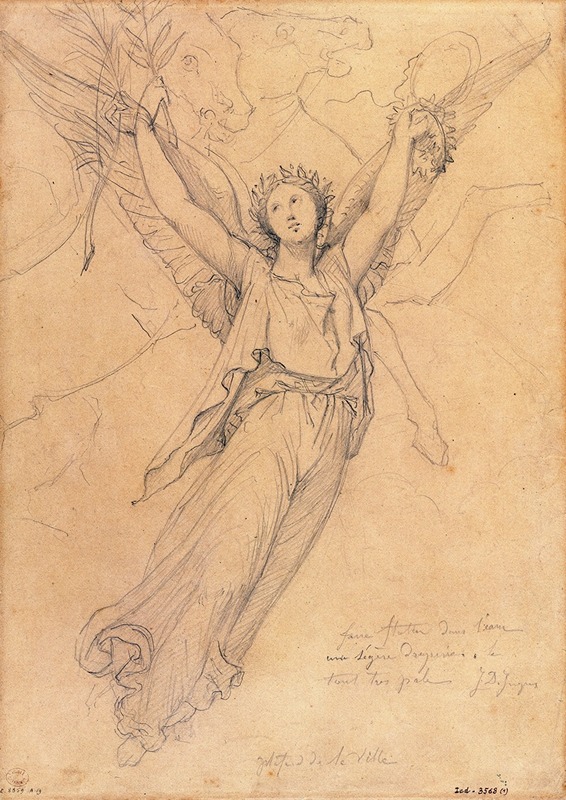
Etude pour ‘L’apothéose de Napoléon Ier’
A hand-painted replica of Jean Auguste Dominique Ingres’s masterpiece Etude pour ‘L’apothéose de Napoléon Ier’, meticulously crafted by professional artists to capture the true essence of the original. Each piece is created with museum-quality canvas and rare mineral pigments, carefully painted by experienced artists with delicate brushstrokes and rich, layered colors to perfectly recreate the texture of the original artwork. Unlike machine-printed reproductions, this hand-painted version brings the painting to life, infused with the artist’s emotions and skill in every stroke. Whether for personal collection or home decoration, it instantly elevates the artistic atmosphere of any space.
"Etude pour ‘L’apothéose de Napoléon Ier’" is a preparatory study by the French Neoclassical painter Jean Auguste Dominique Ingres. This artwork was created as part of Ingres' efforts to develop a larger, more comprehensive composition celebrating the apotheosis, or deification, of Napoleon Bonaparte, the Emperor of the French. Ingres, known for his precise draftsmanship and his dedication to classical ideals, created this study to explore the themes and figures that would eventually be incorporated into the final piece.
Jean Auguste Dominique Ingres was born on August 29, 1780, in Montauban, France, and became one of the most prominent artists of the 19th century. He was a student of Jacques-Louis David, a leading figure in the Neoclassical movement, which sought to revive the classical art forms of ancient Greece and Rome. Ingres' work is characterized by its clarity of form, smooth lines, and meticulous attention to detail.
The study for "L’apothéose de Napoléon Ier" reflects Ingres' admiration for Napoleon, who had a significant impact on French society and politics during his reign. Napoleon Bonaparte rose to prominence during the French Revolution and eventually declared himself Emperor of the French in 1804. His reign saw numerous military campaigns and significant administrative reforms that shaped modern France.
In the preparatory study, Ingres likely focused on the composition and arrangement of figures that would glorify Napoleon as a heroic and almost divine figure. The concept of apotheosis, which means the elevation of someone to divine status, was a common theme in classical art and was used to honor and immortalize important leaders and deities. Ingres' study would have included detailed sketches of the figures, their poses, and the overall layout of the scene.
While the final painting "L’apothéose de Napoléon Ier" may not have been completed or has not survived, the study remains an important example of Ingres' artistic process and his ability to convey grandeur and reverence through his art. The study itself is a testament to Ingres' skill in capturing the human form and his dedication to classical ideals.
Ingres' legacy as an artist is significant, and his works continue to be studied and admired for their technical excellence and their contribution to the Neoclassical movement. His influence extended beyond his lifetime, impacting future generations of artists and shaping the course of art history.
The study for "L’apothéose de Napoléon Ier" is housed in various collections and is often exhibited to illustrate Ingres' preparatory techniques and his approach to large-scale historical compositions. It provides valuable insight into the artist's creative process and his vision for commemorating one of France's most iconic figures.
In summary, "Etude pour ‘L’apothéose de Napoléon Ier’" by Jean Auguste Dominique Ingres is a preparatory study that reflects the artist's admiration for Napoleon Bonaparte and his dedication to classical art forms. The study showcases Ingres' meticulous draftsmanship and his ability to convey grandeur and reverence through his compositions.






